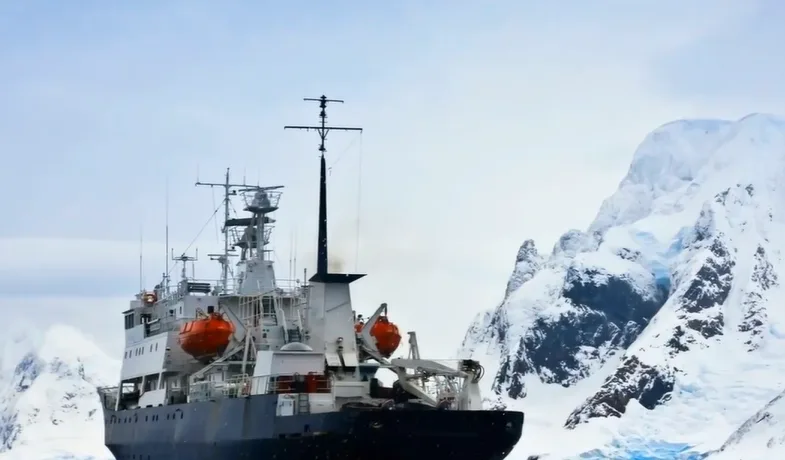
Study finds invasive species could 'hitchhike' their way into Antarctica
Researchers say they were surprised by the findings.
Marine species from around the globe can hitch rides on ships crossing through Antarctica, posing a threat to its ecosystem, according to new research from the University of Cambridge and the British Antarctic Survey.
In their paper, scientists located 1,581 ports linked to Antarctica, all of which can introduce invasive hitchhikers - like mussels, barnacles, crab, and algae - creating the potential to disrupt a landscape that has existed in isolation for 15-30 million years.
Researchers combined port data with satellite observations taken between 2014 and 2018 to form their conclusions.
The paper found that the longer a ship stays in Antarctica, the higher the risk of an invasive species introduction. Fishing and supply ships have, on average, the longest stays at Antarctic ports, followed by research vessels.
Invasive organisms can make their way into Antarctica by attaching themselves to the hulls of ships. Vessels from southern South America, Northern Europe, and the western Pacific Ocean were among the most common visitors to Antarctic ports.
“We were surprised to find that Antarctica is much more globally connected than was previously thought. Our results show that biosecurity measures need to be implemented at a wider range of locations than they currently are,” Arlie McCarthy, a researcher in the University of Cambridge’s Department of Zoology and the British Antarctic Survey and they study's first author, said.
While there are measures in place to help protect Antarctica, including cleaning ship's hulls, they are concentrated on a few gateway ports, Professor Lloyd Peck, a researcher at the British Antarctic Survey who was involved in the study, said in a statement.
“With these new findings, we call for improved biosecurity protocols and environmental protection measures to protect Antarctic waters from non-native species, particularly as ocean temperatures continue to rise due to climate change,” Peck said.
RELATED: RESEARCHERS FIND LIFE BENEATH ANTARCTICA'S ICE
MICROPLASTICS A PROBLEM, TOO
Ships aren't just elevating the risk of invasive species introduction. A recently-published paper by a team of scientists studying microplastics in Antarctica found that 89 per cent of the particles collected and studied came from their ship, likely due to the release of paint and varnish.
The findings prompted the authors to call for the development of more durable and environmentally-friendly marine paint.






